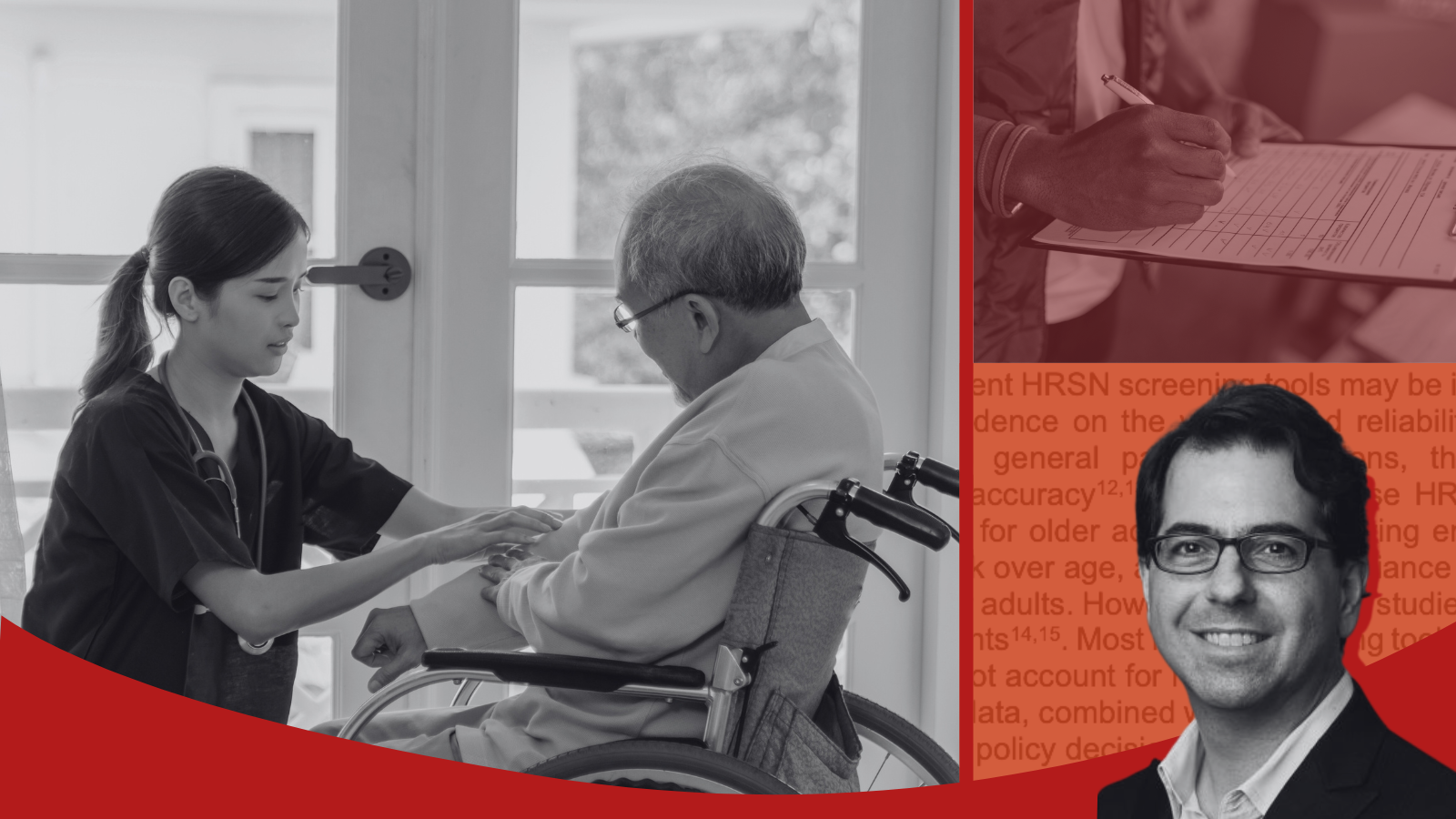
Dr. Mark Unruh, associate professor of population health sciences, has received an R01 from the National Institute on Aging to advance the science of health-related social needs (HRSN) measurement for older adults.
HRSN refers to a patient’s non-clinical, economic, and social characteristics that can drive morbidity, mortality, medical costs, and overall health care utilization. The Centers for Medicare & Medicaid Services (CMS) require screening in inpatient and outpatient settings for HRSN characteristics, including food insecurity, housing instability, and transportation needs. This data is also used in referrals, adjusting payments, for public reporting, and in value-based care.
“The existing HRSN screening tools were developed as one-size-fits-all,” said Dr. Unruh. “Older adults have very different health care needs than younger adults, and although CMS requires HRSN screening, we don’t know how well the current measures are performing.”
Given that Medicare accounts for a fifth of all health care spending, this gap in research could have a significant impact on quality reporting and health policy decisions. Dr. Unruh and his colleagues aim to evaluate the performance of the four most used HRSN screening tools for older adults to identify which measures work best. He will work with a team of research and health policy experts, including Dr. Joshua R. Vest, professor and associate dean for research in the Department of Health Policy and Management at Indiana University, as well as clinicians and statisticians.
Dr. Unruh and his team hypothesize that current tool performance will be worse among older adults than the accepted performance thresholds for clinical utility. Researchers will compare the validity of each tool against reference standard measures using responses from 4,000 Medicare beneficiaries. Performance will be assessed based on age group, dual eligibility status, residential setting, rural and urban settings, and dementia status.
Researchers will also compare the performance of the four HRSN screening tools in predicting health care quality and costs for older adults. This involves assessing how screening outcomes may vary when an older Medicare beneficiary personally answers a screening questionnaire, versus when their caregivers answer. Dr. Unruh’s team will further evaluate the content validity of HRSN screening for older adults, as it is unknown whether the current characteristics being evaluated are most relevant for older adult beneficiaries.
“This will involve speaking with patients in a variety of settings,” said Dr. Unruh. “Once we survey these individuals, we can take that information and link it to their Medicare claims. We’ll be able to determine whether the existing tools are associated with lower rates of adverse events, like hospitalizations or emergency department visits.” Better screening tools might reduce the chance of adverse events, in turn reducing Medicare expenditures.
By identifying the screening tools that are effective and those that are not, researchers could potentially inform Medicare policy, ensuring that measures are better tailored to older adults. Additionally, they could identify HRSN that are not currently accounted for. “The importance of HRSNs cannot be understated,” said Dr. Unruh. “They influence health care utilization and delivery at large. [In care for older adults] we should have tools that can be used in practice.”
- Highlights

